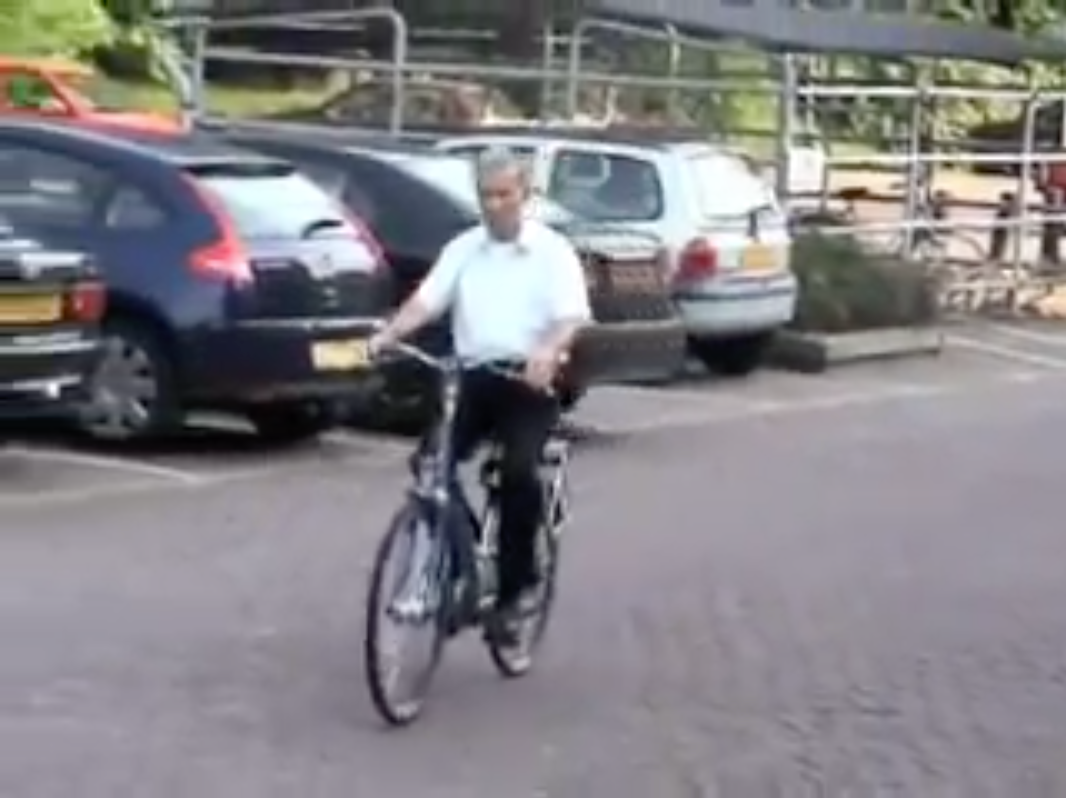Dear Friends,
I am happy to announce that in the December/January issue of Neurology Now I published a small story! The piece was about a positive experience I had when, despite being in an “off” state, I successfully rode my bike several long blocks to deliver a Metrocard to my son so he could take the subway to school. (You can read the piece here.) The idea to do such a thing came from a video now famous throughout the Parkinson’s community. Many of you may have seen it. It was made by the prominent Parkinson’s physician and researcher Bas Bloem about one of his patients, a 58 year-old Dutchman with a crippling case of PD who in the first half of the video struggles to walk, but in the second half, shot only minutes later, rides a bike with ease. Give it a look.
The transformation seems like magic. Even after watching it ten times over, it is still amazing. But it is not entirely inexplicable.
While Bloem and other scientists say there is no conclusive explanation for the man’s success, they do suggest several likely factors contributing to his mobility. First, biking may engage a different cluster of neurons in the brain that are not as affected by Parkinson’s. Second, biking may be a simpler physiological task than walking as it locks the legs into a continuous circular pattern, while walking requires a series of different and more complex actions (shifting weight onto one leg, swinging the other leg forward, pushing off the back toe). Third, pressure from the bike’s pedals on the rider’s feet may provide tactile cues for action.
This last point relates to an important aspect of my own experience and work, both before and since my diagnosis. Tactile cues are something I used extensively as a dancer to help structure and guide my movement. They are an essential part of partnering and also of one’s sensorial relationship to the floor. In order to jump, a dancer must push the floor away. In my work now with PwPs, I also emphasize a relationship to the floor by asking people to push down through their heels in order to elongate their spines. (See PDML post on Parkinson’s and Posture.) This is an action that requires considerable mental attention and conscious effort because with Parkinson’s our bodies tend to crumple and lose all sense of the power of extension.
Biking also involves this action of pushing downward. The pressure from the rising pedal and the feeling of the pedal traveling over the top of its circle of motion cues you to push down. And as soon as you begin to do this, your foot on the other side begins to be pushed up. There is thus a continuous series of cues about when and how to activate your leg and foot, a kind of built-in manual for how to move. This is a saving grace for PwPs because Parkinson’s strips us of many normal internal guides for movement.
This is what we see with the man in the first part of the video. He cannot begin walking because the neural network that enabled walking has been so damaged by Parkinson’s. The physical therapist puts one of her feet in front of his to give him an external, visual cue to stimulate action. This helps a bit, but without a continuous physical prompt he is unable to sustain a regular walking pattern or to direct his body. He has no internal sensory cues to instruct his movements.
When my son called me and told me he’d forgotten his Metrocard, I too felt at a loss for how to move, if not to quite as extreme a degree. Yet when I got onto the bike and began to pedal, things changed. My movement became steady and smooth, with no hesitation or interruption. Even without medication, I was able to ride with freedom and ease.
If you have access to a bike, you may want to try this for yourself (always assuming you can do so in a safe situation – in an uncrowded area with someone else with you to assist if necessary). Pay attention to how the resistance of the pedals makes you more aware of how and when to push down. You may discover a greater understanding of how your body experiences sensorial cues, and a surprising sense of normalcy in your movement.
(A shot of me biking along the East River)
To leave a comment, follow these three steps: 1) Write your comment in the text box below, and click the "Post Comment" button 2) A black screen will appear. Write your name or "Anonymous" in the first text box 3) Click the gray "Comment As Guest" button. Voila! Thanks for your thoughts!
For a detailed visual guide to posting a comment visit PD Movement Lab Comment Directions
